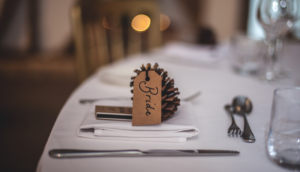
Each year, the US government spends a whopping $306 billion on weather-related damage and natural disaster management in the country.
This is startling.

Each year, the US government spends a whopping $306 billion on weather-related damage and natural disaster management in the country.
This is startling.

As a parent, you’re focused on making sure your kids get the education they need to succeed when they’re on their own.
However, you also realize that home management skills are equally important to help your kids grow into productive, independent adults.
Whether you dream of harvesting fresh herbs from the patio or adding some style to your entryway, you can do it with container plants. Container gardens are hot, trendy, and add color and interest to your hardscape. But every successful container crop begins with one critical detail: the right soil. Different types of plants demand different things from their dirt, so make sure you get it right. Here’s our quick guide to choosing the best soil for your container crop.
Despite their toughness and willingness to thrive while neglected, there is one thing that cacti and succulents won’t tolerate: continuously moist soil. Better too little than too much water is key to the success of these beautiful ornamental plants. These guys need well-drained soil and a container with drainage holes. You can find specific soil for cacti, or you can make your own soil mix by combining:
No matter where you live, citrus trees in containers are a good idea. You can move them inside during harsh winters, or you can rearrange them outdoors as you please. You can also choose from a variety of large planters to add to your landscape. But happy, healthy, producing citrus trees are no accident. You need to plant them in the right soil for them to succeed. Citrus trees enjoy a lightweight planting mix with good drainage and enough aeration. If you can’t find a citrus-specific mix, then look for a potting mix with inorganic materials such as perlite or vermiculite that add drainage. You can also combine a potting mix with ⅓ to ½ parts perlite, vermiculite, or decomposed granite to create a well-draining, moisture-retaining mix.
For ornamental and blooming plants, you want to select a soil that’s light, fluffy, and rich with nutrients. Many commercial potting soils will fit the bill. But know that some plants, including azaleas and hydrangeas, enjoy very acidic soil. In this case, find a soil that is rich in peat moss or peat-moss-based. Tropical plants will want a higher level of organic material in the soil, which you can amend by adding compost or worm castings to the mix. Many potting mixes come with built-in fertilizers, so make sure you choose a soil compatible with your plants’ needs. For example, tropical plants need less potassium and more iron and magnesium than most common plants.
If you choose to grow edible crops in containers, you want soil that’s well-drained, well-aerated, and has sufficient organic material to provide a neutral pH. For indoor herbs and vegetables, you may want to choose a soilless planting material. The most important consideration to make when selecting a soil for your herbs and vegetables is to choose something organic. If you’re planning on eating what you harvest, you’ll want to avoid any soil with added chemical fertilizers. Choose an organic soil and then add compost, worm castings, or a water-soluble organic fertilizer to feed your plants.
Container gardening is a great pleasure, it can add color and interest to your landscape and provide you with fresh food. As long as you start your container crops in the best soil possible, you’ll be rewarded with great success.
About Author: Gail Lopez is a second-generation landscape designer whose family business designs yards with flair. Her things are beautiful plants, outdoor kitchens, and sprinklers and fountains powered by artificial intelligence.

In today’s modern world you might think that knowing how to properly set a table isn’t an important thing to know, but you’d be wrong.
Even in our admittedly “casual, laissez-faire” culture setting a table as expected can aid hosts in their desire to create a memorable experience for their guests.

Between work, family and extracurricular activities you can feel as if you’re pulled a thousand different ways.
When you have a good home management system in place, it can help to reduce the overwhelming feeling that comes with not having a plan.